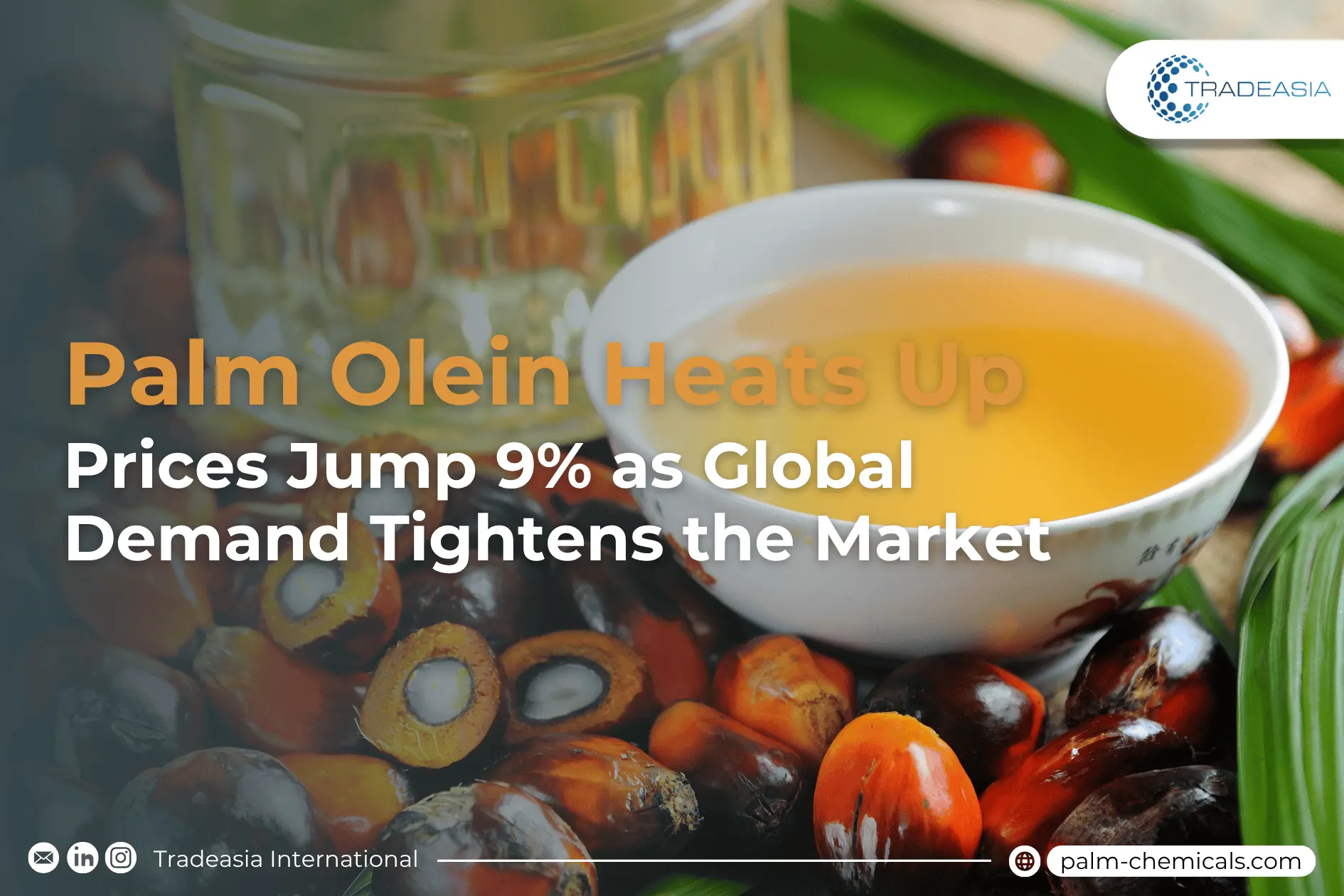The palm oil market entered July 2025 with momentum that few could ignore. RBD Palm Olein prices jumped nearly 9% month-on-month, a spike largely driven by tight regional supplies, export policy changes in Malaysia, and surging demand from buyers in South Asia and the Middle East. Prices that opened at USD 1,008.50/MT quickly gained ground, reaching USD 1,016.50 within weeks. At the same time, strength in the broader crude palm oil (CPO) market provided additional lift, with CPO prices on Bursa Malaysia rising to RM4,070–4,260/ton, their highest in two months. Rising prices for rival vegetable oils—especially soybean and sunflower oil—also gave palm olein an edge in the global market.

These price movements weren’t just sudden, they reflected deeper patterns in a market shaped by both seasonal and structural forces. Throughout July, palm oil prices showed a clear upward trajectory, despite moments of day-to-day volatility. For instance, CPO prices dipped slightly to RM4,276/ton on July 25, a 1.25% drop from the previous day, but still recorded a 6.58% month-on-month and 8.5% year-on-year increase. That same momentum carried over to refined products: RBD Palm Olein rose from USD 989.50 at the end of June to USD 1,008.50 in early July, then hit USD 1,016.50 by mid-July. Compared to other edible oils, palm olein remains a cost-effective choice, especially for countries balancing affordability with large-scale import needs. However, regional price differences—influenced by freight rates, duties, and exchange rates—continue to shape buyer preferences in markets like the U.S. and Europe.
Why Prices Are Climbing: Export Duties, Stocks, Demand, and Weather Impact
So, what’s driving these gains? A big part of the answer lies in policy. Malaysia’s recent decision to adjust its export duties on crude palm oil has made refined products like palm olein relatively more attractive. In contrast, Indonesia has maintained stable and comparatively lower duties on refined palm products, with RBD Palm Olein’s total duty at around USD 77.84/MT, while raw CPO carries a higher duty of USD 52/MT. This structure has incentivized more exports of refined oils, keeping demand high.
But the story doesn’t stop at policy. Port inventory data from both Malaysia and Indonesia show shrinking stockpiles, tightening available export volumes. This drawdown has come at a time when India—currently the world’s largest palm oil importer—is ramping up purchases, especially ahead of its major festival season. The timing couldn’t be worse, as El Niño conditions disrupted crop yields across Southeast Asia in June and early July, reducing fresh supply and putting further pressure on prices.
Looking Ahead: Navigating Volatility and Opportunity
Looking ahead, the market presents both risk and opportunity. Analysts expect prices to creep closer to USD 1,100/MT by the end of 2025, supported by steady biofuel demand, constrained supply, and firm global interest. But this optimism is tempered by several moving parts. Future policy shifts, freight cost volatility, and weather unpredictability—especially with El Niño lingering—could quickly shift the balance.
For buyers, the message is clear: timing and strategy will define outcomes. With prices on the rise and uncertainty hanging in the air, staying ahead of export duty changes, freight updates, and crop forecasts is no longer optional. It’s the new cost of staying competitive in a market where every metric ton—and every moment—matters.

Leave a Comment